When I joined the Film and Television Institute of India (FTII) to learn editing in 1993, Renu Saluja was a star – the role model not only for aspiring editors, but for every woman technician hoping to make it in the film industry. I met her for the first time the following year, when she taught a workshop at the Insitute. The task she set us was to reconstruct the chase sequence from the climax of Khamosh, one of the early features she had edited, directed by her first husband Vidhu Vinod Chopra. Those of us who hadn’t seen the film felt disadvantaged because we didn’t know the exact order of events as they played out in the original version. But when Renu took a look at the 9 different edits presented to her, she seemed most bored with the ones that replicated what she had done. She also didn’t care much whether we used all the gunshots in the sequence, or if a close shot of footsteps came before or after the point-of-view shot of the cop running down the street. What mattered most to her was whether the cuts enhanced the sense of drama. Without her saying it, at the end of that day we had learnt a lesson. If you want to be a good editor, learn to form your own interpretation of the material you’re working with. And never get awed by who has presented it to you.
Renu wasn’t a public figure, certainly not a household name, but almost everybody in the entertainment business had heard of her, something extremely unusual for a film editor. After all, an editor’s contribution is very difficult to pin down. The director designs the shots; the cinematography is easiest for reviewers to admire, whether or not they really understand it. Editing, though, is knowing what to leave out. Deciding where to stop one image and begin another, creatively using that moment of transition.
Renu wore her renown lightly, was charmingly self-effacing when discussing her career with us. “I was lucky, all my friends made films which I edited. Saeed (Mirza) made Albert Pinto Ko Gussa Kyon Aata Hai, Kundan (Shah) made Jaane Bhi Do Yaaro, Vinod (Chopra) made Sazaa-e-Maut.”
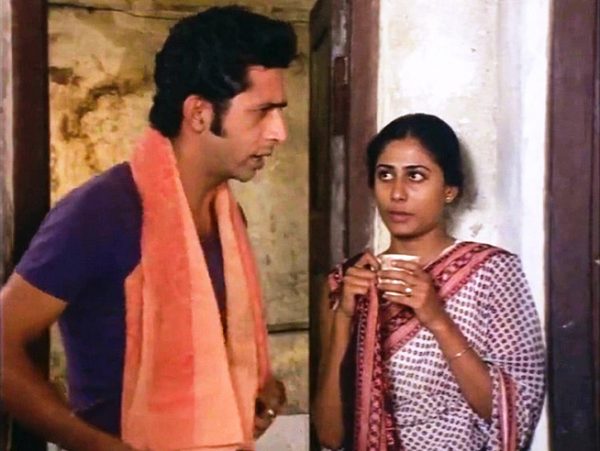
Mirza’s Albert Pinto Ko Gussa Kyon Aata Hai (1980) was her first feature. Watching it now, the cutting appears a little awkward. Just a little bit less sharp than one expects from the Renu of later films. Was this the first-time editor’s hesitation, or the director’s love for his own good-looking shots? Albert Pinto was made on a tiny NFDC budget that didn’t allow too much extra filming, especially of the elaborately choreographed kind favoured by its maker. The editor would have had limited options even if she wanted things to look different. Still, I did notice one Renu Saluja touch. A scene ends with a door slamming shut. The cut comes a few frames before the door actually closes, but the sound carries over onto the next shot. Those who worked with her say this kind of device was a particular favourite. In a slick gangster film, it could have been the start of a chase, perhaps. The urgent momentum created by the overlapped sound would propel the action forward. But in the self-consciously realistic working class setting of Mirza’s film it remains only an editor’s indulgence.
Her next two films, however, made it clear that Renu was special. Ardh Satya (1983) and Jaane Bhi Do Yaaro (1983) both had political themes, yet were poles apart: one a gritty, violent drama on the police and underworld, the other a black comedy lampooning corruption. The entire crew of JBDY – director, producer, assistants, even actors – were friends, and the process of making the film had a sense of collective effort. Renu was present on the sets throughout the shoot, and was also credited as assistant director. On the other hand, Govind Nihalani was not part of her FTII coterie and her friends didn’t quite know what to make of her decision to work with him on Ardh Satya, a film whose sensibility seemed alien to theirs.
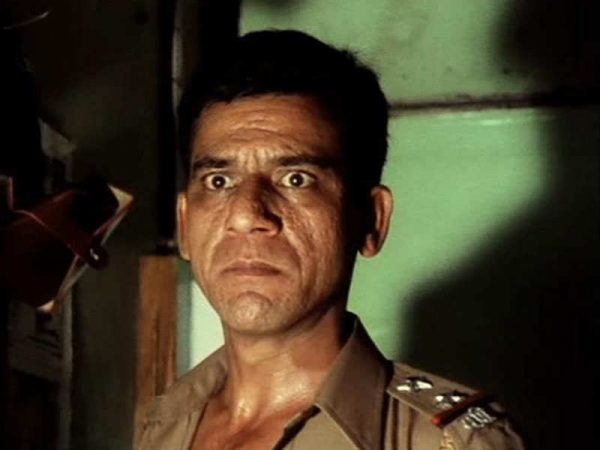
Nihalani was notorious for his immense shooting ratio, meaning that there was a huge difference beween the amount of material he canned on location and the length of the finished film. The same action was captured from many different angles, offering multiple options when constructing the scene on the editing table. To create drama, Nihalani depended on the pace of the editing, as much as he did on the stunning performance of his lead actor, Om Puri. Presented with all the material she might have ever wanted and some more, Ardh Satya’s editor knows where she’s going from the first scene, which begins with close shots of people dancing to pop music. And it’s not always about quick cutting. Often, in the scenes where Inspector Welinkar confronts his nemesis the evil don Rama Shetty, his rage is enhanced by holding onto a shot for that extra unbearable moment. Kundan Shah has an idea why Nihalani, already an acclaimed film-maker by then, chose Renu. “We worked on very tight budgets those days and she had the capability to deliver a finished film.” She could be trusted to wrestle with the thousands of feet of film generated on any shooting floor and transform it all into a polished product. Nobody knows that better than Shah. The process of editing Jaane Bhi Do Yaaro, he admits, was one of the most harrowing he has ever been through.
The shots in JBDY are wonderfully designed and executed. There are a number of long takes, the camera sometimes roaming through the set, sometimes just holding one frame and letting the actors carry the scene with their spot-on comic timing. However, the moment of transition, when it comes, seems unplanned and even jerky. “That’s because we couldn’t shoot more than 60 per cent of the script,” Shah says. It was too long, and they were forced to leave bits out. Things got worse in the edit. “The timing was wrong,” Shah admits candidly. “The beginning and end of every shot worked while the middle of it sagged. And there were no cut-aways.” Renu made drastic decisions to chop and change bits around. “The film didn’t belong to me any more. It was her baby. She was totally in command.” Even then, the first cut exceeded the producer’s brief by a good 45 minutes. So it was back to the editing table, and an agonized discussion through the night with the entire crew trying to decide what to do.
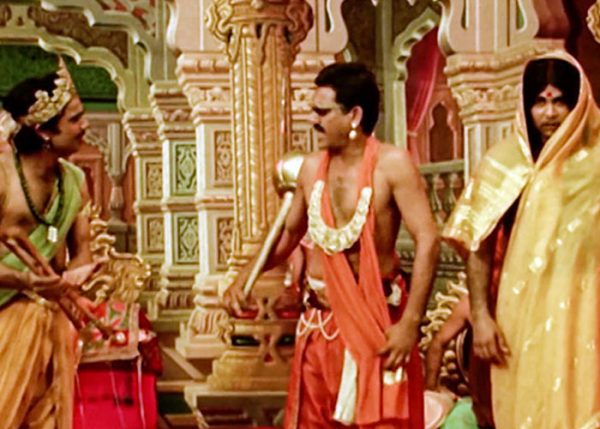
In the end, the film worked beyond its makers’ wildest expectations. It was a popular hit and has gone on to become a cult favourite. Both Ardh Satya and JBDY, released around the same time, made the difficult crossover from the ‘art film’ circuit to box-office success. It is this fact, perhaps, that provides the key to understanding Renu Saluja’s contribution to Indian cinema. Throughout her career, she stood at the crossroads where the parallel film turns into the mainstream ‘commercial’ movie.
She wasn’t a flashy editor. If the occasion demanded it she could bring on the pyrotechnics, but her cuts didn’t usually draw attention for their own sake. Instead, they focussed the eye on the action being played out on the screen. She was, in that sense, on the side of the layperson in the audience. The story had to be communicated first of all. Each of the films she edited bore the individual style of its director. Mirza had his leftist ideology, Shah his flair for the absurd, Vinod Chopra his preference for suspense and action. In each case, her work complemented them. Eventually, each of Renu’s ‘gang of four’ found their stardom in different ways – with her as the common factor. Perhaps they were the ones lucky to have her.
Undoubtedly, her own sensibility matched closest with Chopra’s. Together from the FTII days, married soon after, their partnership continued even when they divorced years later. Chopra’s diploma film was already a thriller of sorts with a twist at the end. They worked together on it, and Renu edited every film he made afterwards until her untimely death mid-way through Mission Kashmir.
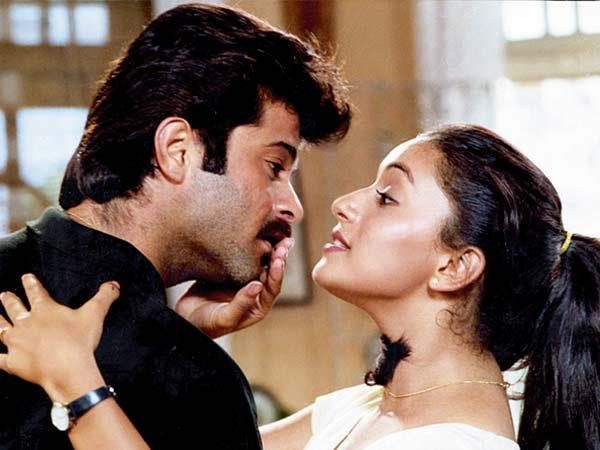
After the relatively off-beat Sazaa-e-Maut and Khamosh, Chopra went mainstream in a big way with Parinda (1989). Again, anecdotes abound of Renu’s presence on the sets. The most famous of these (which she recounted herself) is the scene where Anil Kapoor murders one of the gang henchmen inside a factory. It was one long take, but Renu made the cinematographer Binod Pradhan separately shoot the moving machinery in the room. Chopra argued, but eventually the single shot did not hold, and the scene is edited to the rhythm of the machines. Parinda was slick and powerful, much acclaimed by critics. It’s dark cinema noir look, though, didn’t quite work in the movie theatres. Before the coming of multiplexes, the old projectors often produced such a dim image that the front benchers complained they couldn’t see the action on the screen. The casting of popular stars, the awards and the success of its soundtrack did make sure, however, that Vidhu Vinod Chopra was now a recognised name.
Renu became well established, too, with her own editing rooms and a bunch of loyal assistants. Her friends were now making bigger films, and naturally, she was in charge when the shooting stopped. Her second husband Sudhir Mishra, made his name with Dharavi and Is Raat Ki Subah Nahin. Ketan Mehta, another old FTII buddy, came to her with Maya Memsaab and Sardar.
Till the end, she remained the automatic choice for film-makers attempting anything slightly removed from the mainstream. Bandit Queen, Godmother, Hey Ram, and almost inevitably, Rockford followed by Split Wide Open – the first of the niche small-theatre films which heralded the multiplex boom. Once again, Renu was there.
Every ex-FTII film editor of my generation gets asked at some time, “Did you assist Renu Saluja?” Unfortunately for me she didn’t need a new assistant when I approached her. But I still became part of her gharana. My first job was with Bela Segal, who had once assisted Renu. The day we began, Bela asked me to get a plain ruled notebook, in which she would write down instructions to me and memos to herself . “That’s how Renu does it.” Over the next year, Bela would often quote Renu on editing, and also on how out-takes and cuttings should be labelled and classified. “What if you die tomorrow? I must still be able to find everything.” By the end of the project we had an entire cupboard stacked with cans, each one containing more than 1000 feet of film. And it was possible to remember and locate a single frame that had been snipped off a shot months ago. As Kundan Shah puts it, Renu had “discoved a method to become sort of one with the film – to get to its soul through the mechanical art of editing.”
This article was published earlier in Time Out, Mumbai.


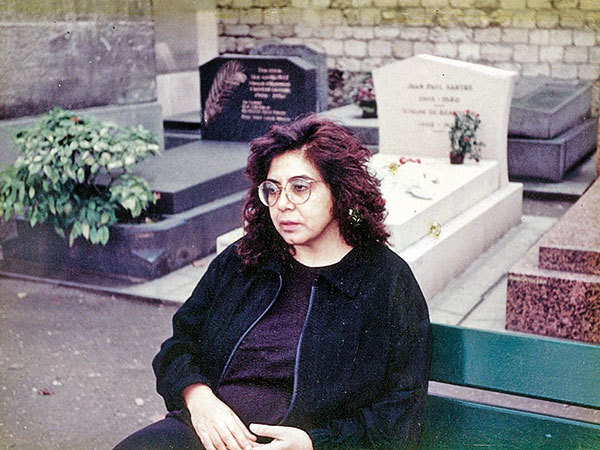
Very well written piece. Renu was unique as an editor in many ways and this gives a little glimpse into that.
Hyderabad Blues wasn’t edited by Renu Saluja
Thank you for the fact check, for picking out the error that the editors of TimeOut Mumbai failed to spot when this piece was originally published. You’re right. Renu didn’t edit Hyderabad Blues, but she did edit Nagesh Kukunoor’s next two films, ‘Rockford’ and ‘Bollywood Calling’ while his fourth film, ‘3 Deewarein’ was edited by Renu’s chief assistant and right hand man, Sanjib Datta. What I was saying about her gharaana. Requesting Karan to please make the correction to the article!
Yes, I have corrected it. Lovely piece, Jabeen!
My guru Maa. I think she was the reason I became editor . She was an amazing film maker. The finest editor who’s detailing to telling the story was so perfect. Her way of cutting the film was such that it evokes emotions always. We truly miss you Ranu ji.
Great article Jabeen. My husband Nitish Roy was Art Director for Parinda. I had the fortune of briefly meeting her on the sets of Parinda. Nitish has always held she was the best!